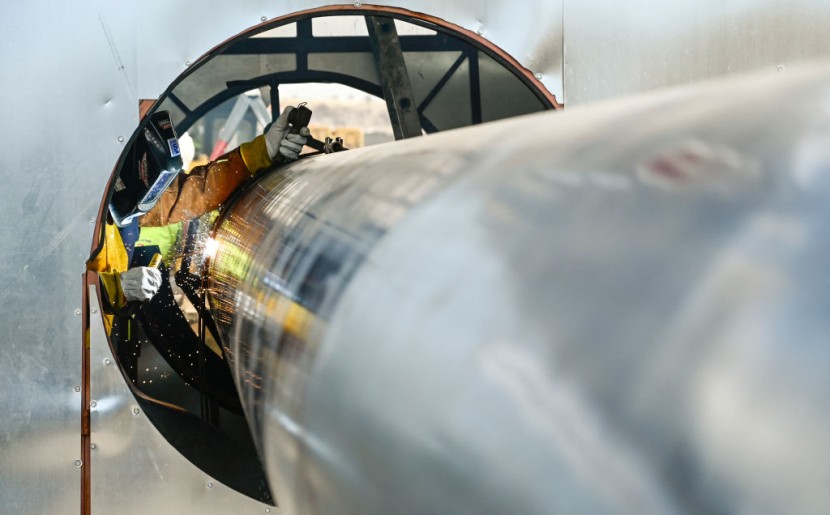
Moscow announced on Wednesday that a Ukrainian "sabotage" group blew up a portion of the Togliatti-Odessa pipeline that Russia used to export ammonia prior to the offensive.
In the midst of the conflict with Russia, the 2,500-kilometer (1,534-mile) pipeline is part of the international negotiations to enable grain exports from Ukraine.
Russia Accuses Ukraine of Blowing Up Ammonia Pipeline
Ukrainian officials have accused Russian forces of opening fire on an ammonia conduit near the community of Masyutivka. Monday evening, near the village of Masyutovka in the northeastern Kharkiv region, a Ukrainian sabotage and reconnaissance party blew up the Togliatti-Odesa ammonia pipeline, according to the Russian defense ministry.
According to NDTV, the ministry said that a number of civilians were injured and that "they received the necessary medical assistance."
After Russia sent troops into Ukraine in February 2022, the pipeline ceased operation. The resumption of Russia's ammonia exports through the connection is one of Moscow's conditions for maintaining the grain export agreement, which ensures the secure passage of Ukrainian grain shipments.
According to both Kyiv and Moscow, a conduit used to transport ammonia fertiliser from kraine. The village is situated on the frontline between Russian and Ukrainian forces. Oleh Sinehubov, the administrator of the Kharkiv region in Ukraine, provided a distinct account of the events. He claimed in a Telegram message that Russian forces had bombarded the pipeline, as per The Strait Times.
Approximately 5.45 p.m. on Tuesday, six Russian projectiles struck near a pumping station near Masyutivka, he said, nearly 24 hours after Moscow claimed Ukraine blew up the same pipeline.
Russian agencies reported that the Russian section of the pipeline is secure and under control, citing the operating company. The resumption of supplies via the world's longest ammonia conduit, the Tolyatti-Odesa pipeline, may be crucial to the renewal of the Black Sea grain export agreement.
Since Russia invaded Ukraine in February 2022 in what it termed a "special military operation," the pipeline has been closed. Russia has repeatedly expressed skepticism as to whether it will continue to renew the grain agreement mediated by the United Nations and Turkey, which facilitates agricultural exports from Ukraine via the Black Sea.
Moscow has included the resumption of the Togliatti-Odessa pipeline among its conditions for renewal. UN spokesman Stephane Dujarric said Wednesday that the organization has not received any official notification about the pipeline damage.
Moscow has stated that it will restrict the number of vessels permitted to travel to the Pivdennyi port near Odessa until the pipeline is restored. Maria Zakharova, a spokesperson for the Russian Foreign Ministry, stated in a briefing on Wednesday that it would take between one and three months to restore the damaged section of the pipeline.
Russia, Ukraine Blame Each Other
Ukrainian President Volodymyr Zelensky stated that evacuation preparations were in the works for three Ukrainian-controlled frontline villages. He indicated that Russian artillery bombardment had damaged the ammonia pipeline, The Sun reported.
He distinguished between the "terrorism" of the dam detonation and the "consequences of war" caused by the rupture of the ammonia conduit. Since Putin's invasion of Ukraine in February 2022, the conduit has been out of commission.
Despite the conflict, the Russians consider the pipeline essential for resuming grain and fertilizer exports to Ukraine. The alleged assault follows the Tuesday collapse of a significant hydroelectric dam in Novo Kakhovka.
An estimated 18 million cubic meters (4.8 billion gallons) of water could flow from the breached dam towards the city of Kherson, prompting concerns of inundation in 80 towns and villages.
Residents of southern Ukraine are preparing for a second day of rising inundation, as authorities have warned that a dam breach on the Dnieper River will continue to release water from a massive reservoir, causing the water level to rise.
Both parties have placed responsibility on the other, but the Russians are strongly suspected of planting bombs on the dam. Residents can be seen sloshing through knee-deep water in their flooded homes as rescue personnel transport them to safety on video footage circulating on social media.
In areas controlled by Ukraine on the western side, the chief of the Kherson Regional Military administration, Oleksandr Prokudin, stated in a video that water levels were anticipated to rise by three feet over the next twenty hours.
Related Article : VIDEO: Ukraine Accuses Russia of Blowing Up Major Dam in Kherson
© 2025 HNGN, All rights reserved. Do not reproduce without permission.








